Ebony’s pick: TIME & STYLE's Museum Cabinet from Japan
At Ebony and Co, we’re crazy about design. Especially when it uses wood. And whenever we come across a beautifully designed piece of furniture in wood, we can’t wait to find out more. TIME & STYLE’s Museum Cabinet is just such a piece – so we talked to the folks at Japanese furniture company at their shop in Amsterdam.
‘For this cabinet we use a three-way mitred sticking joint, called a mengoshi hagi’
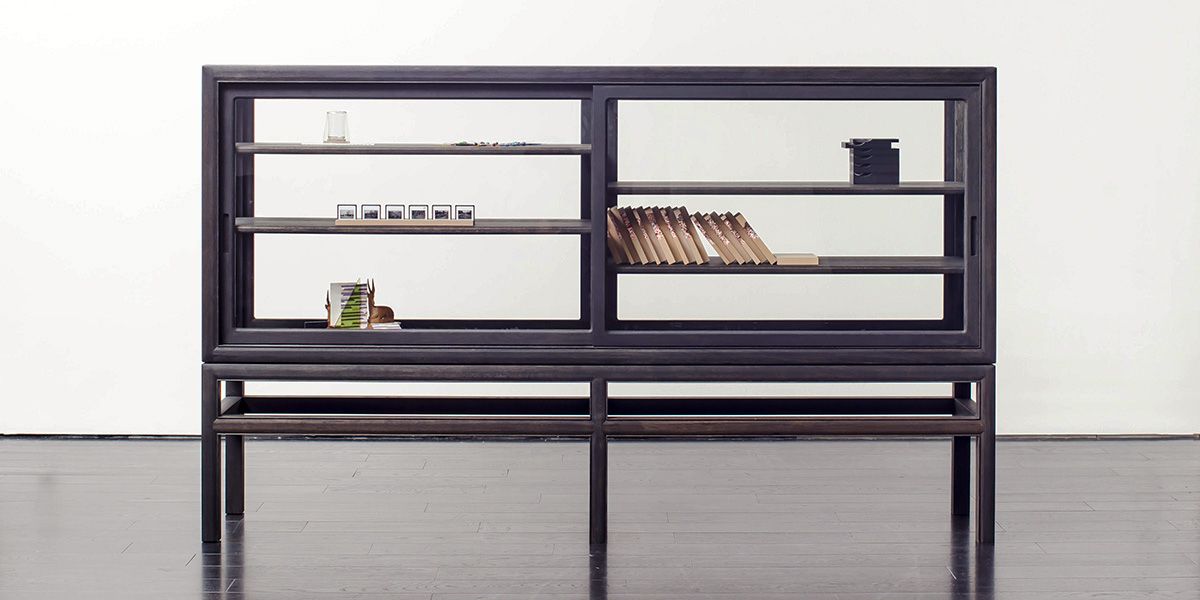
TIME & STYLE | Museum Cabinet
Japanese Oak
TIME & STYLE: ‘As a Japanese company, we’re very proud to offer this cabinet, as it’s a truly domestic product.We use only timber from Hokkaido, which is Japan’s northernmost island. This is where we find the sort of wood we need: Japanese oak, commonly referred to as “ohnara” or “mizunara”. The climate in Hokkaido is colder than in the rest of Japan. This is why Japanese oak from this part of the country has a slower growth and therefore a more uniform, straight grain, often called “torafu” (tiger stripes). The timber is a uniform yellowish-brown, a little paler in colour than that of European or American white oak, and much milder in character. It weighs about 670 kg/m³ when dried.
Japanese oak does not have a wide trunk and therefore isn’t a suitable material for table tops and the like. Since slower growth enhances overall workability of our timber, Hokkaido, and especially Asahikawa, is a centre of wood- and furniture production. We manufacture our cabinets there, in our own factory.
Oak, like other woods, is prone to staining when it comes into contact with iron. That’s why a recognized technique involves applying a natural stain to the wood to achieve a deep, black hue on the surface. We apply the same technique to our cabinets and offer the stained oak alongside the natural colour, as well as a Japanese mountain cherry version.'
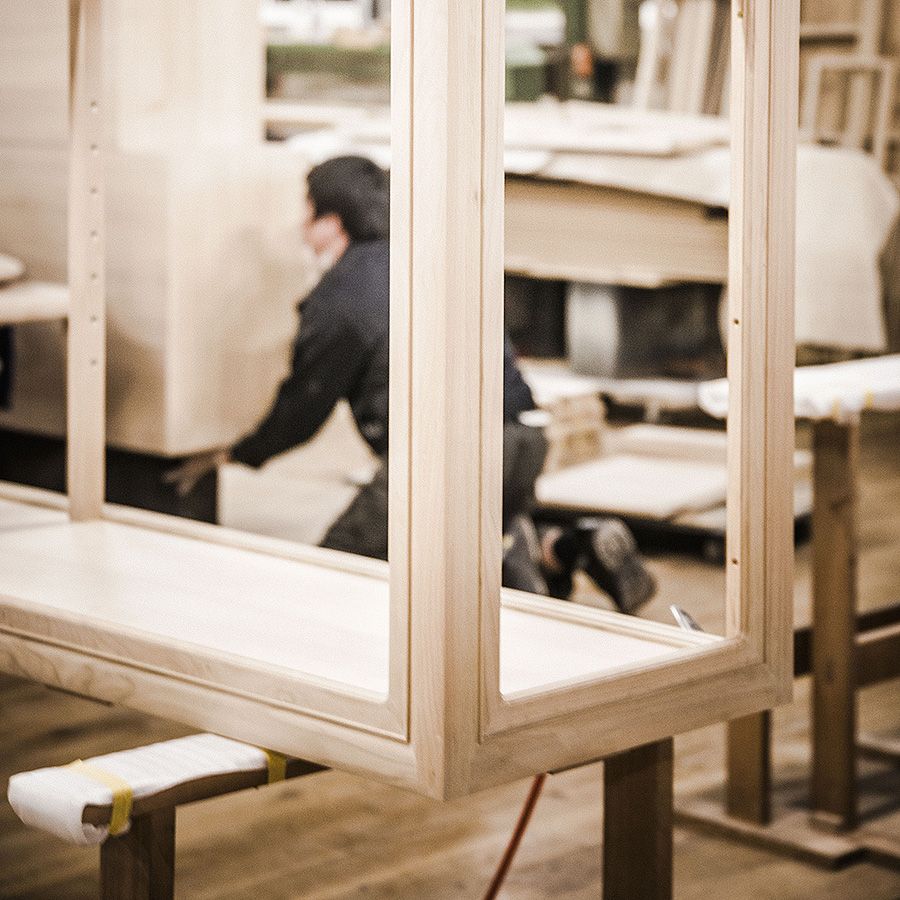
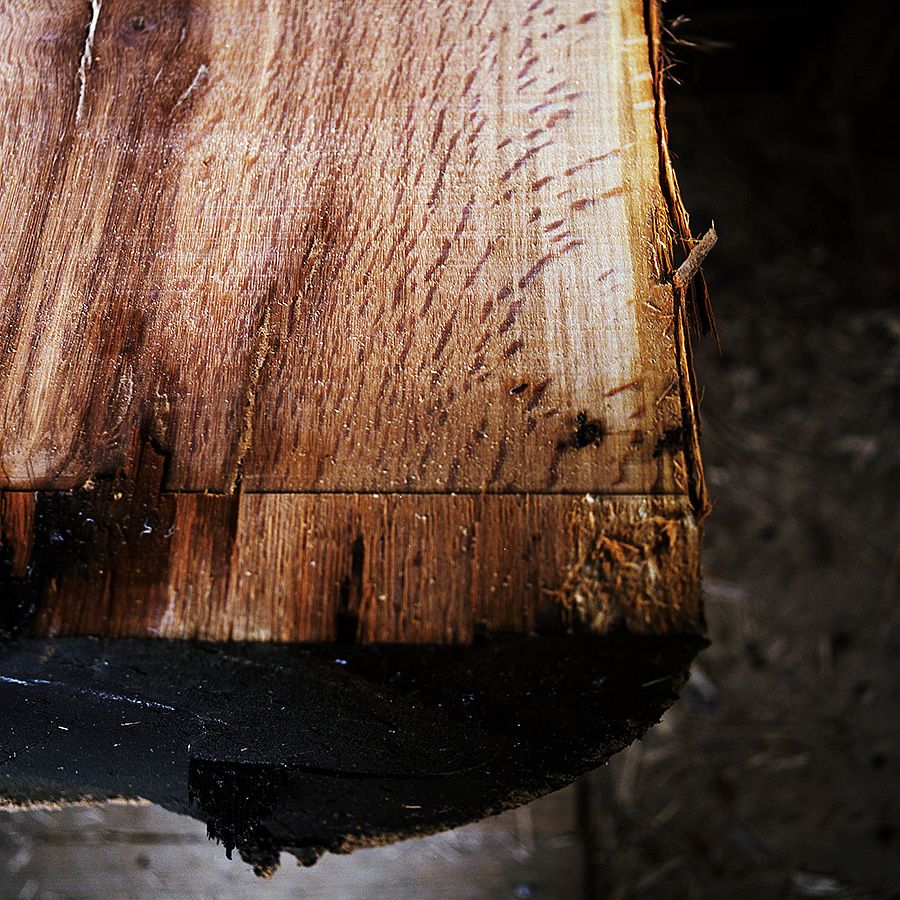
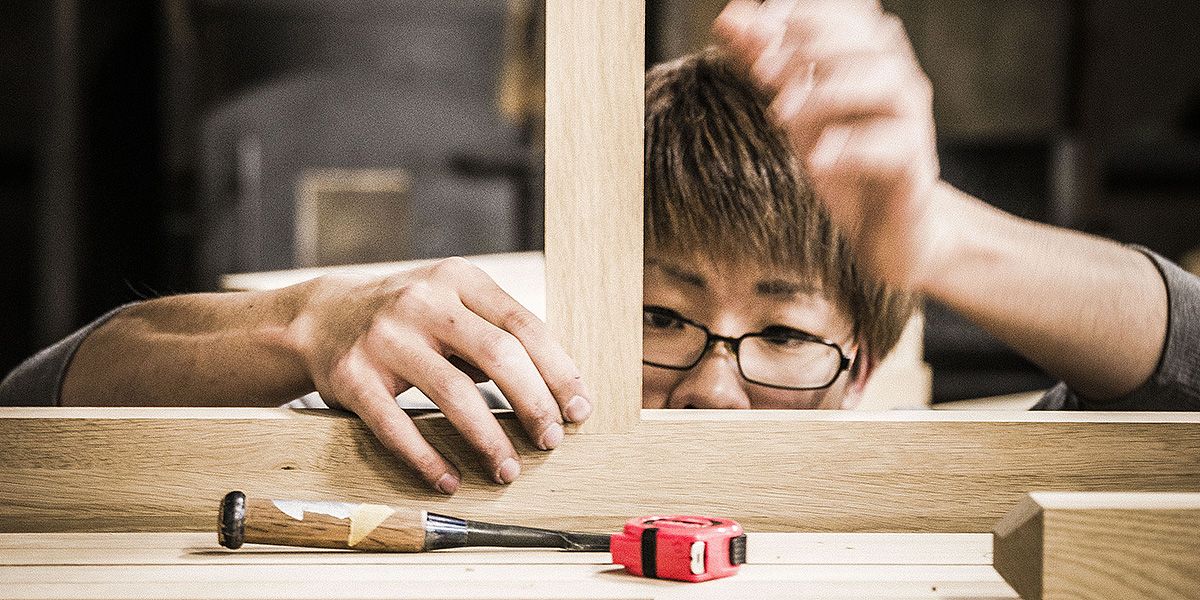
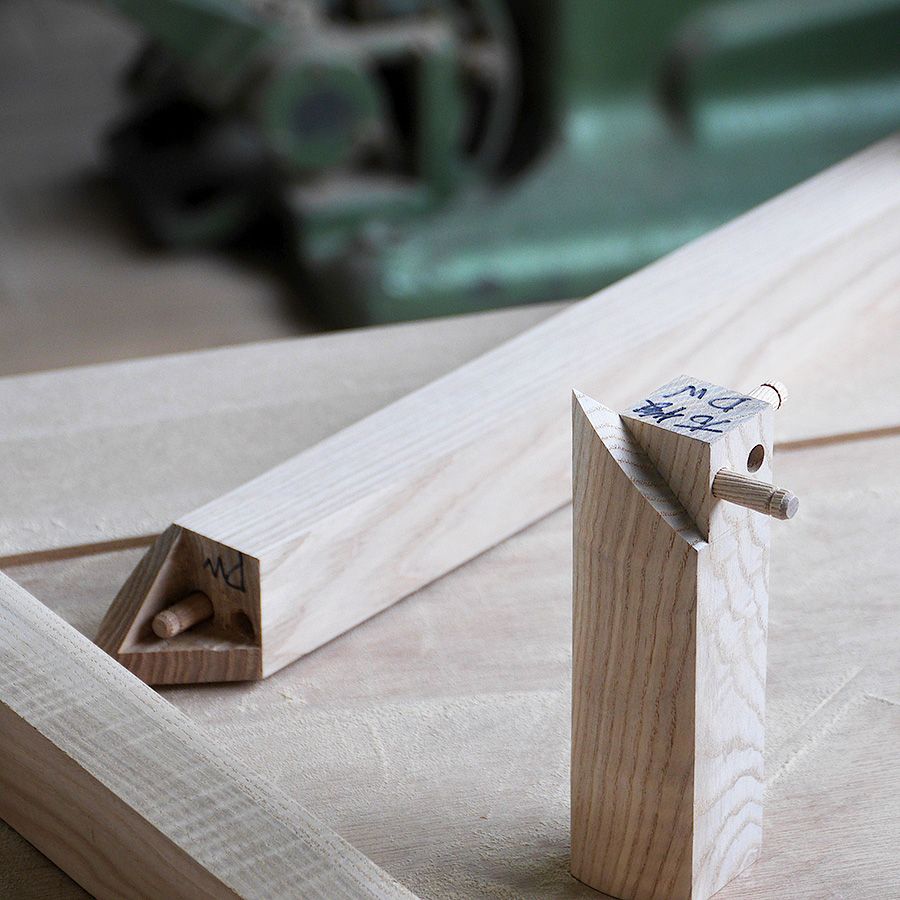
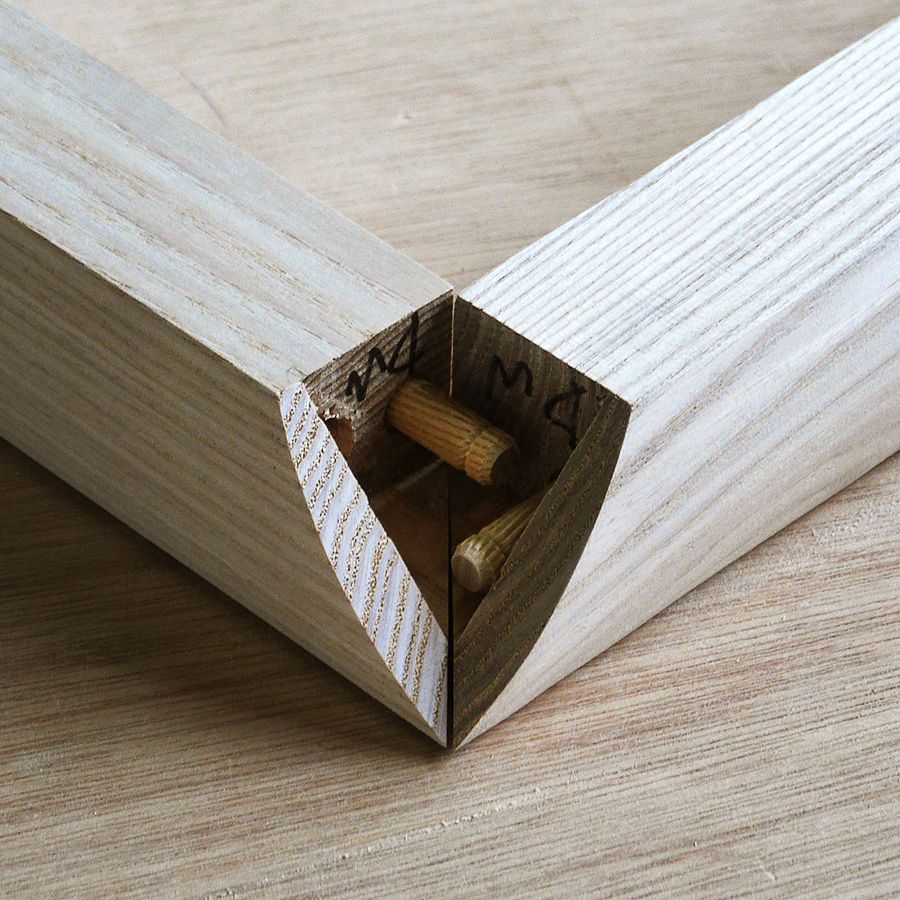
The intricate three-way mitred sticking 'mengoshi hagi' joint